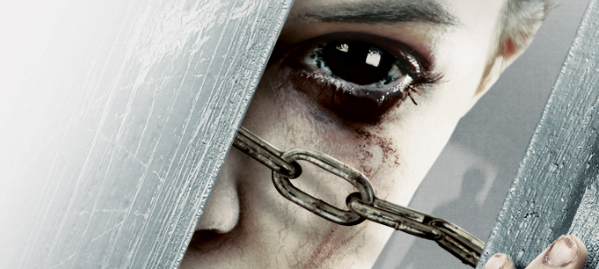For his new film Dead Within, Film Independent Fellow Ben Wagner locked his lead actors in his kitchen, filming them for three continuous days. Well, not really locked–Wagner says he used his kitchen (the only location in the movie) as a black theater space, where the actors would learn to ignore the camera and workshop various ideas for three days. “It allowed us to genuinely surprise them with loud noises, things slamming into or crawling under doors, like a fun house,” he said. “It created the right atmosphere for experimentation and the scares were genuine.” Wagner wanted to nail the scares because he was making a horror film; Dead Within is a psychological thriller in which a couple (played by Dean Chekvala and Amy Cale Peterson) attempts to survive a deadly outbreak by isolating themselves in their cabin. Over the summer Millennium Entertainment picked up the rights to distribute the film and already Wagner’s immersive approach and commitment to the performance of the characters has been impressing audiences and critics. We talked to Wagner about his immersive approach and what it takes to pull off an indie film in the horror genre. Why did you decide to lock the actors in the cabin and how did they cope with it? How did it influence their performance and the movie as a whole? I’d heard an interview with RJ Cutler where he said some of the strongest moments from his documentaries would come weeks or months into the process, once the subjects had become so accustomed to the camera’s presence that they forgot it was there. Actors creating fully defined characters and documentary subjects are very different, but I thought something interesting would come from using the same philosophy on a scripted project. How do you think Dead Within—an independent horror film—would have been different if you had been working with a bigger budget? What freedom does it give you and how does it limit you? I’m stubborn. When I decided to tell this story, it was going to happen, which is probably the most important part of making any independent project. This movie is about the dissolution of a toxic relationship that should have ended months ago if not for extenuating circumstances. The emotional journey of these characters wasn’t dependent on a budget. I think the key to the film’s success is that it wouldn’t be a better film with a bigger budget. We started out making a verité, docu-style film with an immersive style designed to evoke certain emotions and reactions for the performers, and more resources wouldn’t have improved that. Sure, the effects would be a little better, but it’s not a film dependent on gore effects. Amy and Dean delivered nuanced and engaging performances, and helped create these characters with Matt Bradford and me. Tim Gillis shot a beautiful film. Josh Bradford and Clayton Worbeck created a score that wove intricately into William Tabanou’s mix. Rick Grayson cracked the impressionistic montage editing style that Harry Yoon and ultimately George Folsey Jr. refined. All of these elements were created by skilled practitioners who believed in the project and I owe them all big time. What are the horror films that influenced you as a filmmaker? Horror films are boldly allegorical. If you want to tell a story by metaphor, use horror. Good horror films and thrillers require your full attention. If anything I was trying to tell a relationship drama with the heightened stakes of an infection/invasion/haunting movie. As much as George Romero and Dario Argento are broad and obvious influences, Steven Soderbergh’s The Girlfriend Experience and Bubble probably had more stylistic influence on the film. Tell us about the prequel comic and what interested you about adding to the story off screen? A story doesn’t have to be confined to a screen in a dark box for 90 minutes. We experience life through human interaction and conversation, literature and increasingly through small screens. Dead Within works as a feature film, but why not expand the world and introduce the characters, the infection and the elements that get our protagonists into that cabin—elements that might be interesting or relevant in different media but wouldn’t work in the film? We created a prequel comic that illustrates the horror that lead them to that cabin, personal blogs and twitter accounts showing their relationship as it developed over years, and a “real-time” report of the outbreak through fake news outlets (all of which you can discover and explore at www.cinstracker.net). In addition we have 45 minutes worth of webisodes we’re releasing that explore their time in the cabin prior to the start of the film. I want to give people ample ways to access and explore this world. What do you think makes a horror film truly scary to viewers? Like all good stories: an investment in character. If you truly care about the well-being of those on screen, you desperately want them to survive whatever is lurking around the corner. That and tension and a good sound mix. Diana Buendia / Marketing Assistant
